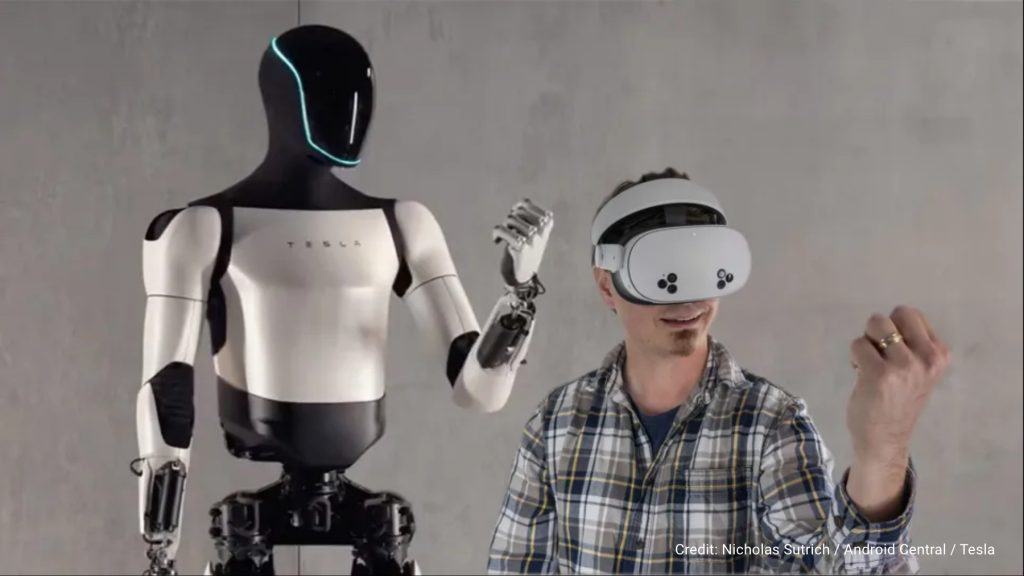
During the “We, Robot” event, Tesla unmasked its latest Optimus humanoid robot, remotely controlled robot used by humans in the delivery of healthcare and improvement in social connections and reshaping human interaction.
The company’s eccentric CEO Elon Musk demonstrated the newest version of the Tesla humanoid Optimus robot, and with surprise enough to highlight this, despite its designation as “autonomous,” these robots use humans operating them by means of VR headsets.
Innovation Elderly Care and Human Interaction
Optimus Tesla humanoid robot is revolutionizing the future of healthcare, highlighting the high need of aged populations to receive remote assistance, particularly for the elderly and people with disabilities. The meaningful interactions by Optimus Humanoid Robot can offer companionship and assistance without the complications of transportation logistics.
Imagine waking up on your 91st birthday to a friendly robot that brings you coffee and breakfast, tech experts said. Later, when a new pain prompts and you call your doctor, he will be able to examine you remotely through tesla’s Optimus humanoid robot from your home. This is not just science fiction; it is a transformation of the potential of Tesla technology.
The “fully autonomous robots” claims from Tesla have been challenged by critics, but there is some real-world practical use to the remote-control approach.
Trained operators using relatively inexpensive VR systems, such as the Meta Quest 3S, can drive the Optimus Tesla humanoid robot movement to further improve care – not only helping in safety but serves more patients in a much lesser time to remove healthcare workers’ workload.
Concerning the fear of remote access and control, the communication framework for Optimus humanoid robots would also include strong security measures that would involve local authorization codes and ways to implement emergency shutdown options to ensure safe interaction.
Humanoid Optimus Robot as a Healthcare Alternative
Pricing these robots long-term at $20,000-$30,000 puts Tesla into a position where they will be an attractive substitute for many expensive long-term care facilities. Knowing how fast the costs of healthcare can rise, being able to have a capable robot at home could be very convenient and save a fortune.
Tesla is hiring VR teleoperation positions even now for efficient professionals to get into operating these robots skillfully. Tesla’s humanoid robot Optimus technology has more much potential to improve lives as remote-controlled robots are fitted with appropriate mechanisms.
Beyond health, a mix of VR and robotics opens perspectives for improving social contact. As perceived in Musk’s dream, soon, a cheap robot would substitute for a loved one’s virtual appearance and would let one have substantial contact with somebody over long distances, which can be a lifesaver solution for people who suffer from loneliness or isolation.
Inside Telecom provides you with an extensive list of content covering all aspects of the tech industry. Keep an eye on our Tech sections to stay informed and up-to-date with our daily articles.